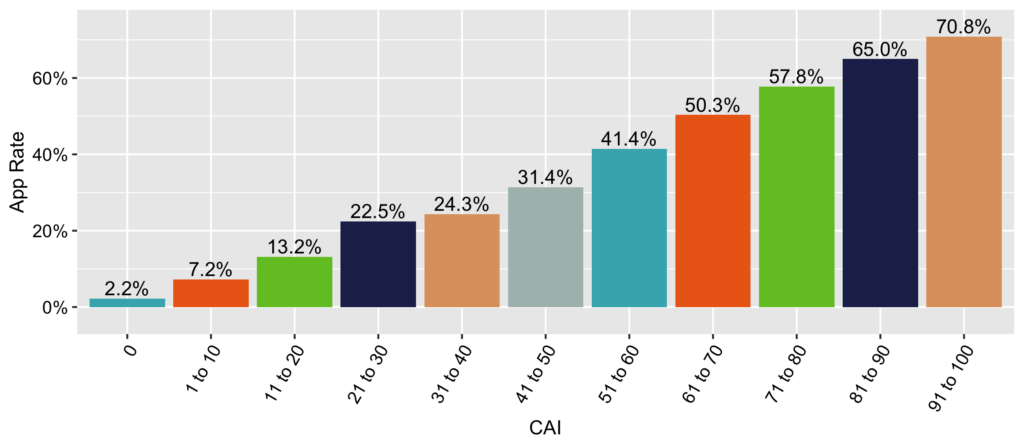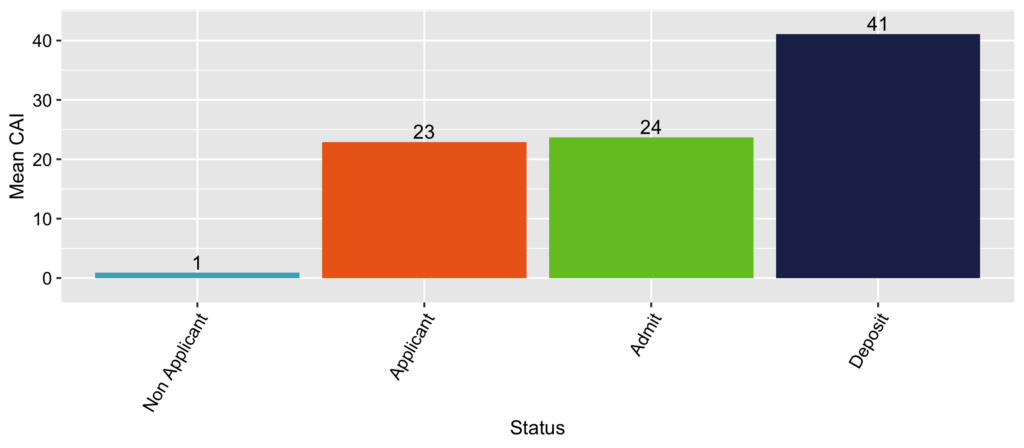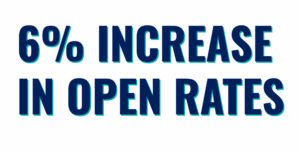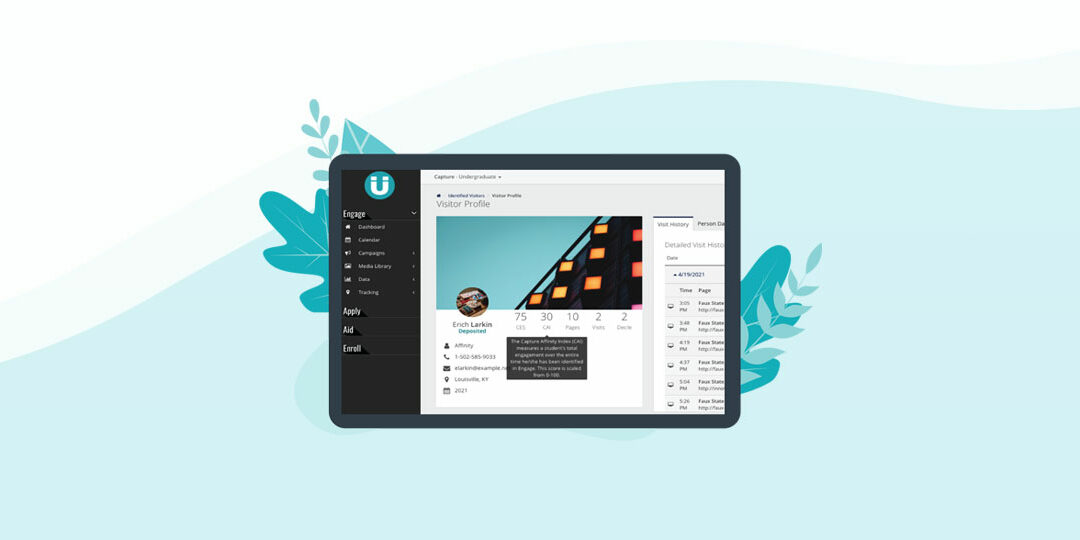Students are more receptive to your messaging when they are highly engaged with your website. It’s something we know. It’s something we test. That’s why Capture Higher Ed measures that engagement and affinity for our client institutions through our proprietary Capture Engagement Score (CES) and Capture Affinity Index (CAI).
CAI is a measurement of a prospective student’s cumulative online engagement with a school from the time of identification. It’s not a prediction … but it might as well be. Year after year, we see CAI scores correspond with a prospect’s likelihood to apply. Put another way: If she’s not coming to your website … she’s not coming to your university.
Check out this graph for the 2021 fall class.

Across Capture clients, see how affinity rates, or CAI scores, correlate with application rates. Students with the highest CAI scores, 91-100, applied at a 70.8% rate while those with a low score, 1-10, applied at a 7.2% rate.
Now, look at the average CAI scores for all prospective students in the non-applicant, applicant, admit and deposit statuses for 2021 class.

Applicants and admitted students are way more engaged than non-applicants; students who have deposited are way more engaged than those who just applied or were admitted but did not deposit.
Guiding Your Recruitment Efforts
The behavioral data gathered by ENGAGE, Capture’s marketing automation platform built specifically for higher ed recruitment, provides you with a Capture Engagement Score (CES) and a Capture Affinity Index (CAI) for each prospective student who visits your website. These measurements guide recruitment efforts through Daily Visitor Reports and Counselor Alerts.
Capture uses multiple variables, a sophisticated algorithm and leading data science to create a CES, a score that guides the communication strategy delivered through ENGAGE’s marketing automation. Our hypothesis around CES is that students come in and out of engagement with a school as they move along the decision process. We know students are more receptive to messages from the school at times when they are highly engaged.
In a previous study, we tested it … and the hypothesis was confirmed: students who are currently engaged (i.e. have a CES above 0) open emails at a significantly higher rate than students who haven’t been to the website recently.
Across a sample of nine schools, we looked at whether having a CES above 0 had a positive effect on email open rates, controlling for various other factors that influence open rates — distance from campus, email domain, time of year and day of the week. We also controlled for overall engagement as measured by the CAI, not just recent engagement. (Remember, CAI is Capture’s proprietary measurement of a prospective student’s overall online engagement with a school … not just recent engagement.)
 Across all schools, recent engagement had a positive effect, increasing open rates by between 4 and 12 percentage points, with a median effect of 6 percentage points. Six percentage points is a big difference between open rates. It’s the difference between a school we’d say needs improvement and one we’d hold up as an exemplar.
Across all schools, recent engagement had a positive effect, increasing open rates by between 4 and 12 percentage points, with a median effect of 6 percentage points. Six percentage points is a big difference between open rates. It’s the difference between a school we’d say needs improvement and one we’d hold up as an exemplar.
This is a big deal. It says that our original hypothesis behind ENGAGE is correct. Students are more receptive to your messaging at times when they are more engaged with the school.
Measuring engagement — how often a prospective student visits a website and what they do when they get there — does give us a true indication of whether a prospect is interested in applying.
By John Foster, Data Scientist, Capture Higher Ed




